The first time I saw Jan, she was waving some koi fish airsocks (koi-no-bori) around enthusiastically and talking about Japan’s otoko-no-hi (Boy’s Day) celebration. Tall and slender, with wavy black hair and a bohemian artist’s flare, she has a contagious exuberance that can’t be missed. I didn’t miss her, but neither did I know who she was. I knew she was at the hotel and I was having coffee with my daughter while waiting to meet with her.
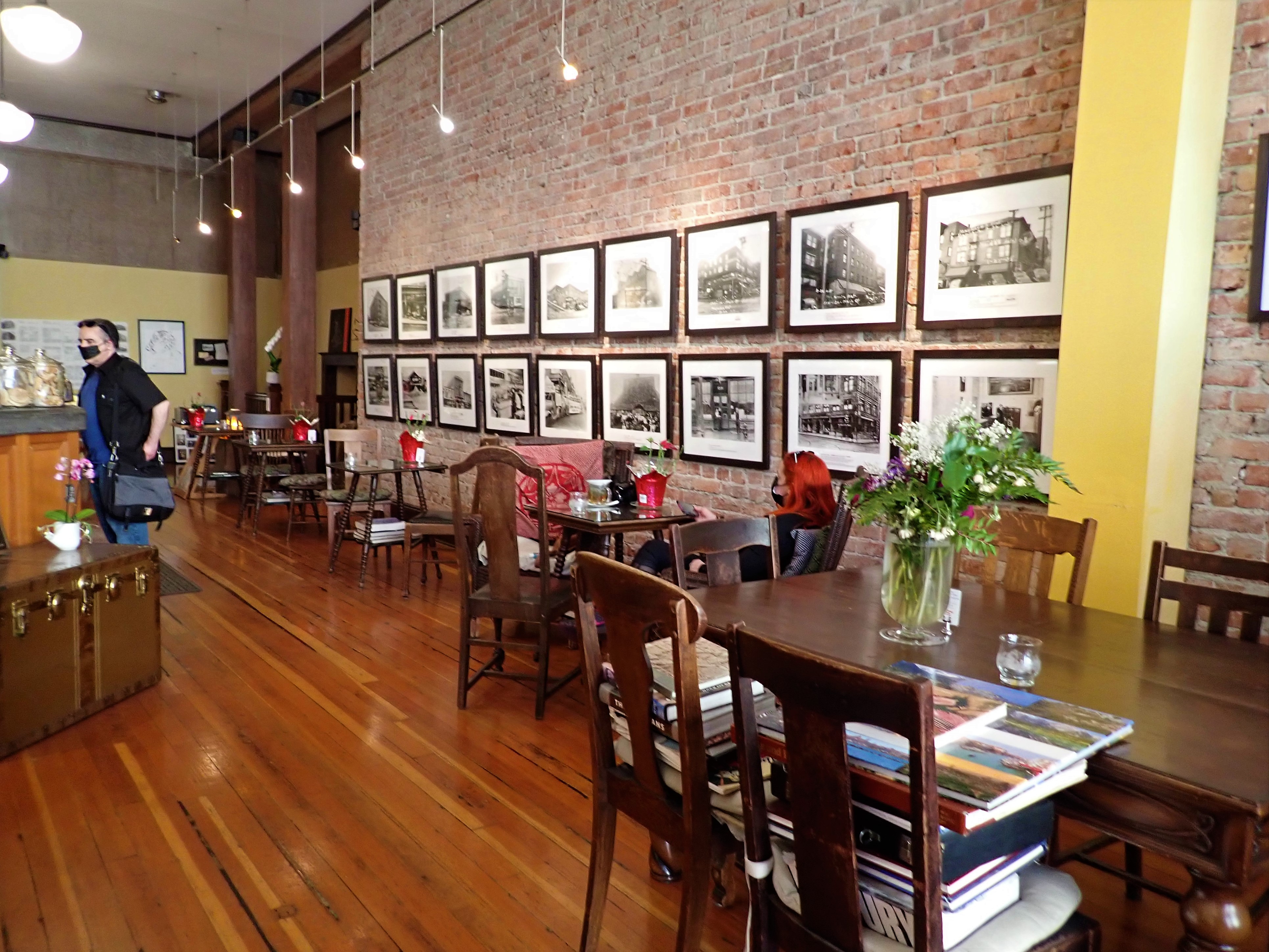
The tea house, on the bottom floor of the hotel, was quiet but for the shushhh of the espresso machine and the soft strains of opera floating in the open door.
There were framed newspaper articles and enlarged photographs on the walls, ceramic dolls on countertops, and an antique record player with very old Japanese vinyl records in a rack. I noticed the window in the floor where items left behind during the internment could be seen in the basement. I had read about those items. There had been several attempts to locate the original owners and finally everything had been carefully documented and displayed beneath the floor of the tea house.
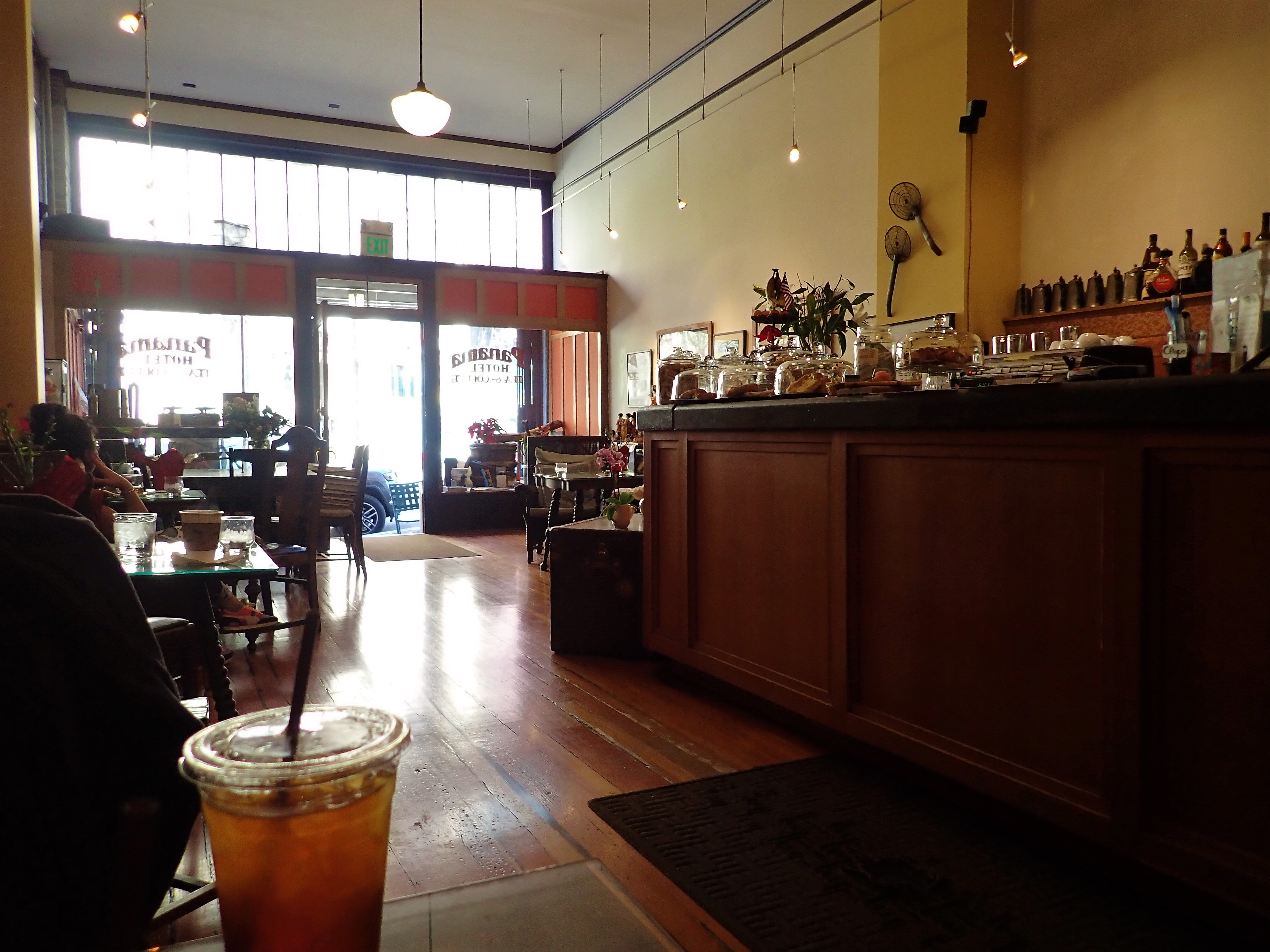
The barista had said that the illusive proprietress was outside with some guests when we arrived; so I went out to search for her.
The first person I came across pointed her out, rushing down the street toward the intersection. “Jan!” I shouted. “Jan wait!” the helpful lady shouted. “Jan!!” hollered my daughter. Luckily, she stopped and turned back as we called out to her, because we would never have caught up.
After talking to us for a few minutes, and ascertaining that we had not noticed the things we should have in the teahouse, she turned around and led us back inside so that we could read some of the framed articles on the walls and look at the photographs. She is so knowledgeable about the history that surrounds her and provided such insight, it was difficult to keep up. We followed her around, listening to stories about the amazing history of Japanese-Americans in Seattle, reading articles hung on the walls, looking at antiques and legacies. Even the walk-in cooler is original, installed in 1910, and still being used today.
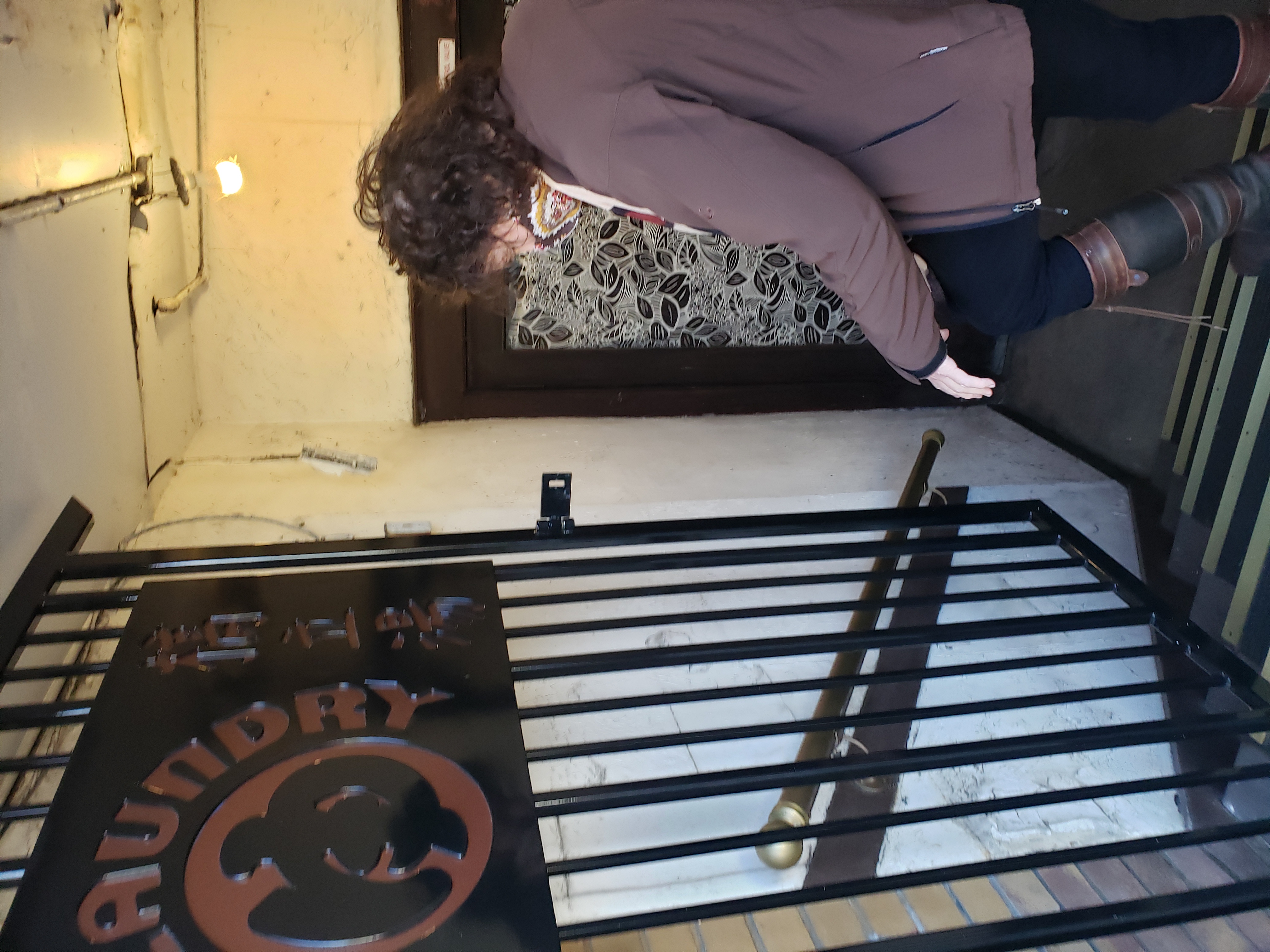
The building and the history it stores are unique, and after several decades of restoring and caring for the hotel, it is obvious that it has been a labor of love. As passionate as she is about her community and its history, Jan believes that passing on her knowledge to future generations is of equal importance. Her enthusiasm and youthful vibrance belie her years of knowledge and experience.
Jan’s personal history is captivating as well. Her father was an illegal immigrant and both of her parents worked. Jan grew up learning at her father’s feet and developed a strong sense of independence. She studied art in college and then flew off to Rome, where she lived and worked for the next 15 years. It was in Europe that she first developed an understanding and appreciation of history. Upon returning to Seattle, she rented a studio around the corner from the Panama Hotel and became part of the community.

She met Mr. and Mrs. Hori, the second owners of the hotel and Japanese-style bathhouse (sento). It had been shut down like many other businesses, because of sprinkler non-compliance after the Ozark Hotel fire in 1970, but it still had water and electricity. The sento was shut down in the 60’s, but the Panama has been a working hotel until recently.
We walked down the street with Jan, who was on a mission to get some sticks to hang the koi-no-bori from the windows of the hotel. Along the way, many neighbors stopped to talk to her. It was evident that she is well-known and respected. She actively takes care of her neighborhood, instilling a sense of community and even feeding the cats in the evening. The owner of Kobo Gallery around the corner said that Jan was part of the reason they opened a 2nd store in Japan Town (Nihonmachi). “Fifteen years ago, the neighborhood wasn’t as nice at it is now,” she said, “but Jan was here and she’s making a difference.” An older gentleman wearing bright blue, 70’s-style, well-creased trousers and a silky shirt greeted Jan on our way back. He took the package of sticks from her and carried it several blocks uphill, chatting all the way.
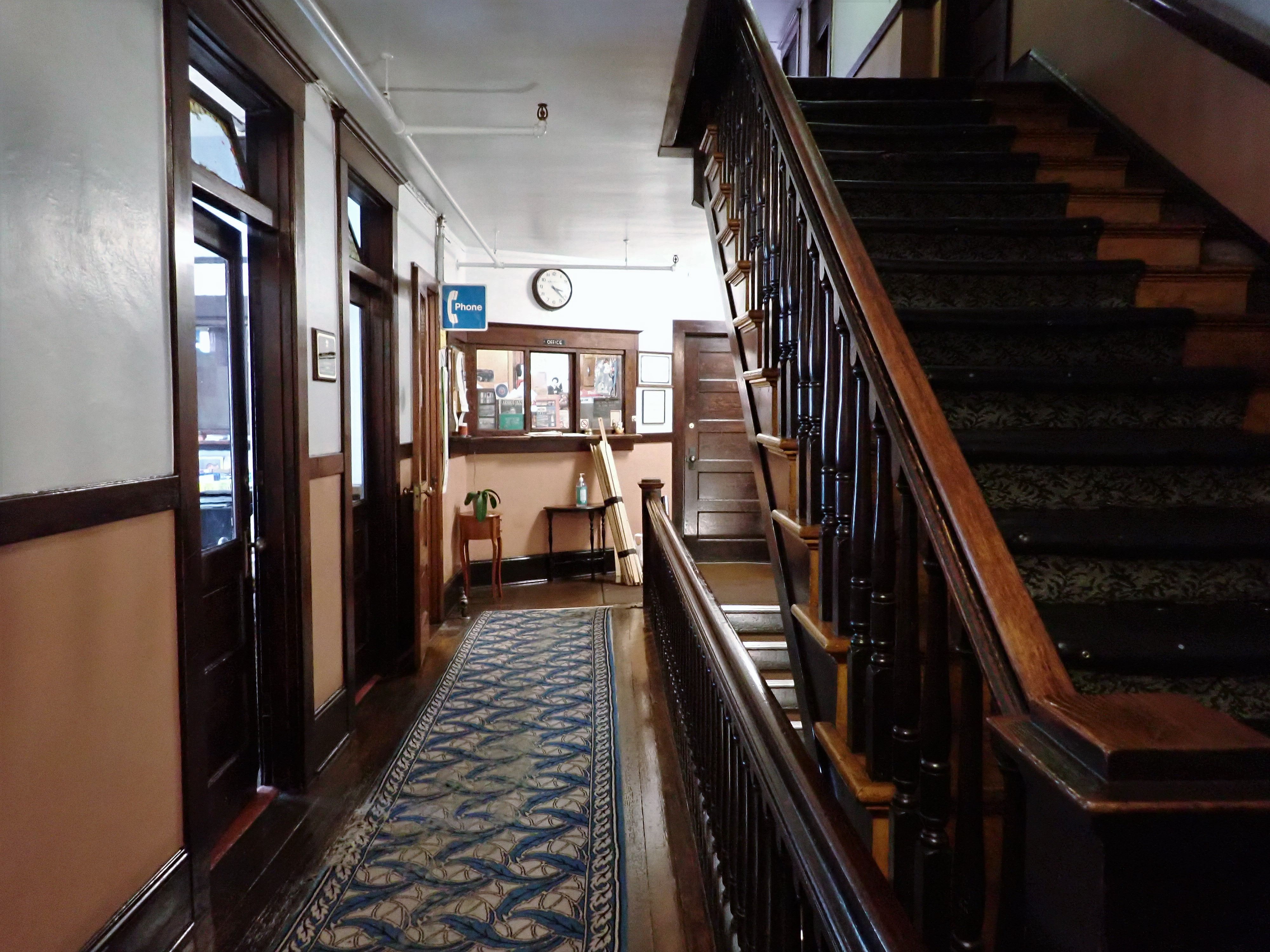
Seattle’s Nihonmachi was a thriving hub of community and commerce before the war. The Densho Encyclopedia asserts that in 1930 the Japanese population in Seattle was 8,448. These early residents were industrious, successful business people, especially excelling in agricultural and dairy farming. Myriad shops within the 6-block radius included import stores, florists, banks, bakeries, and restaurants, schools, temples, and performance halls.
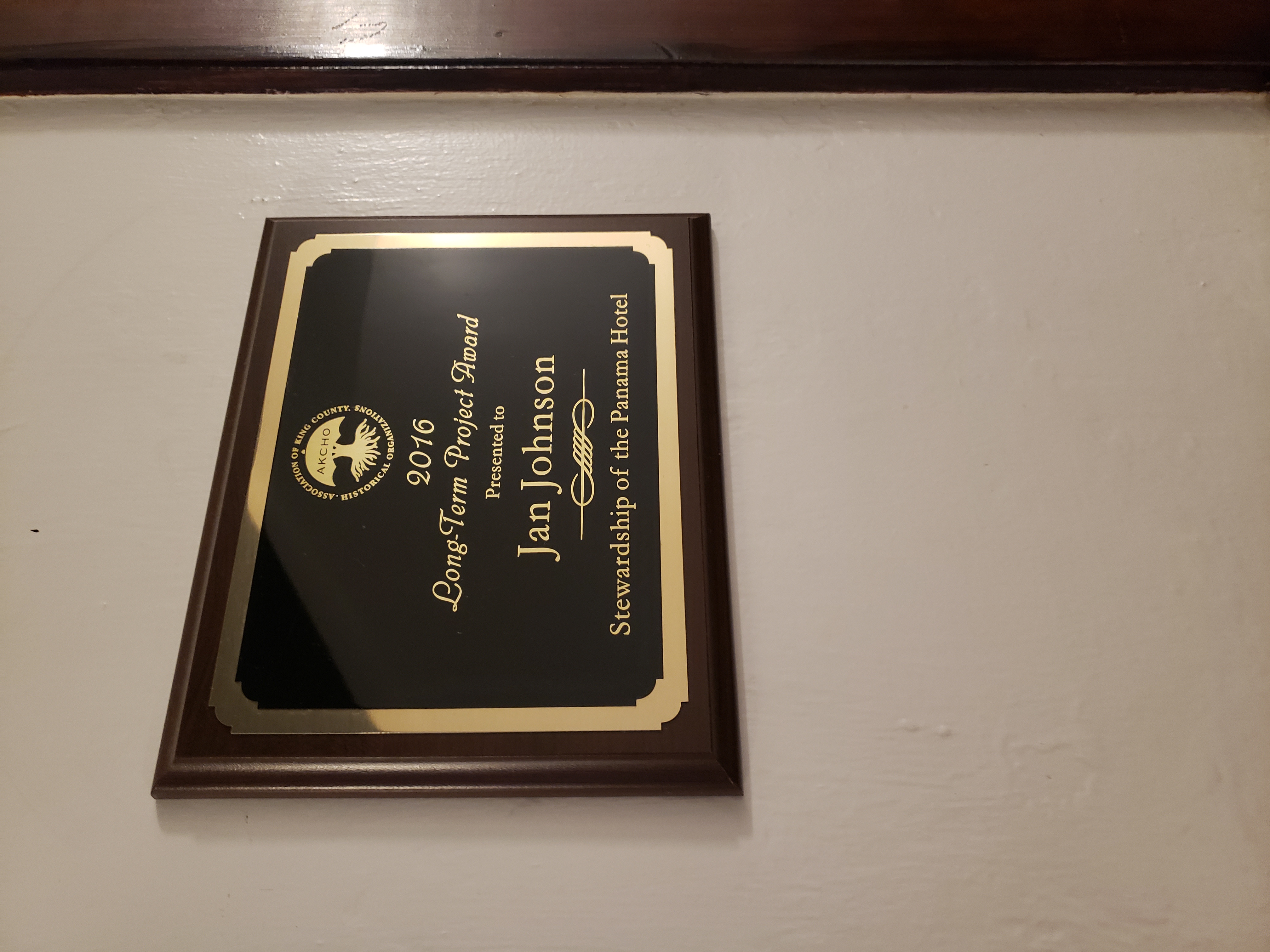
According to Jan, there were 52 Japanese-owned hotels by the time the Panama Hotel was built in 1910. The hotel contains the last sento in the United States and was designated a U.S. National Historic Landmark in 2006. Most recently, Jan and the Panama Hotel were awarded the Japanese Foreign Minister’s Commendation.

My daughter and I stayed the night at the Panama Hotel. The beds have antique springs which are noisier and bouncier than the modern version, but are surprisingly comfortable.
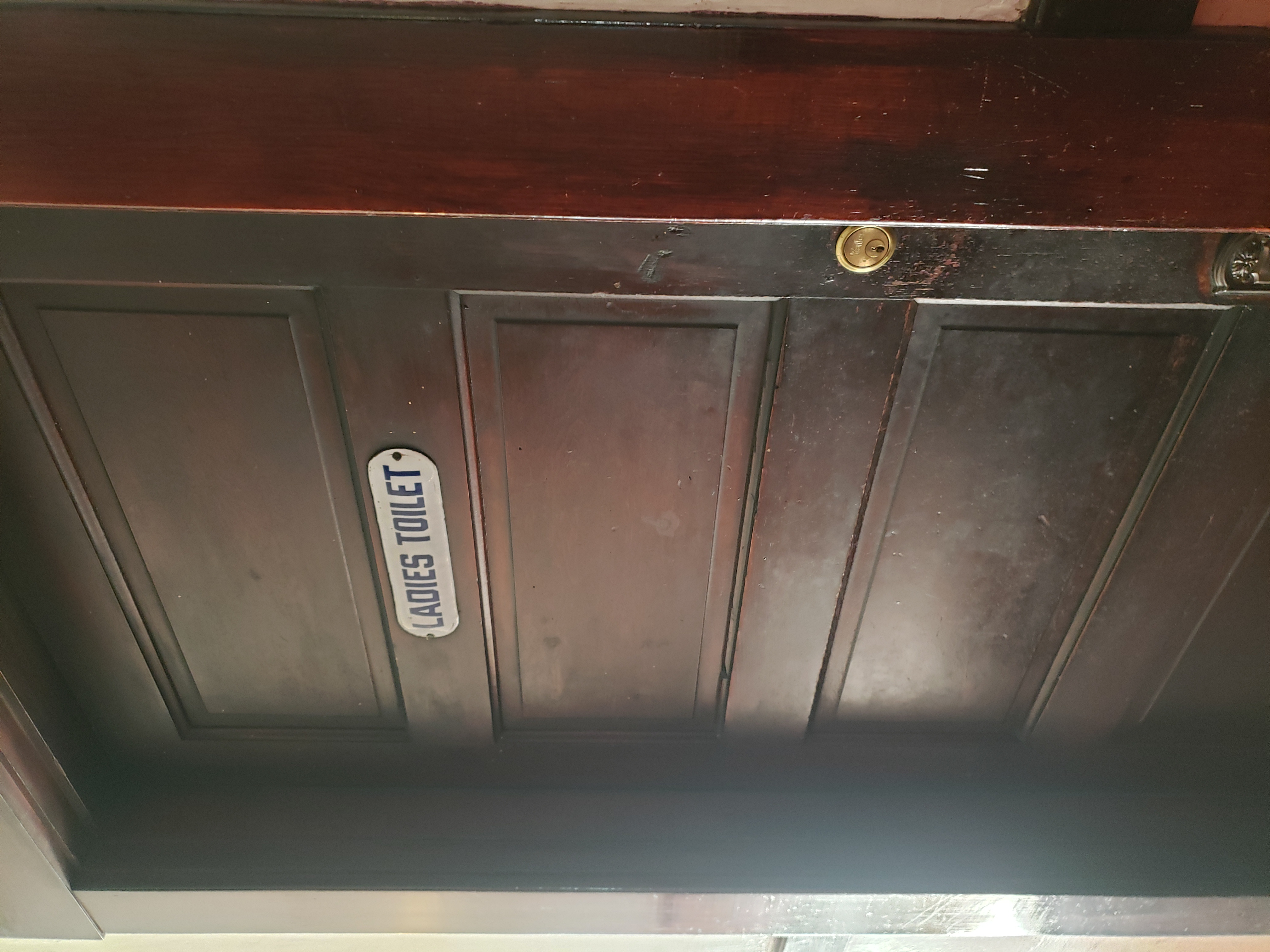

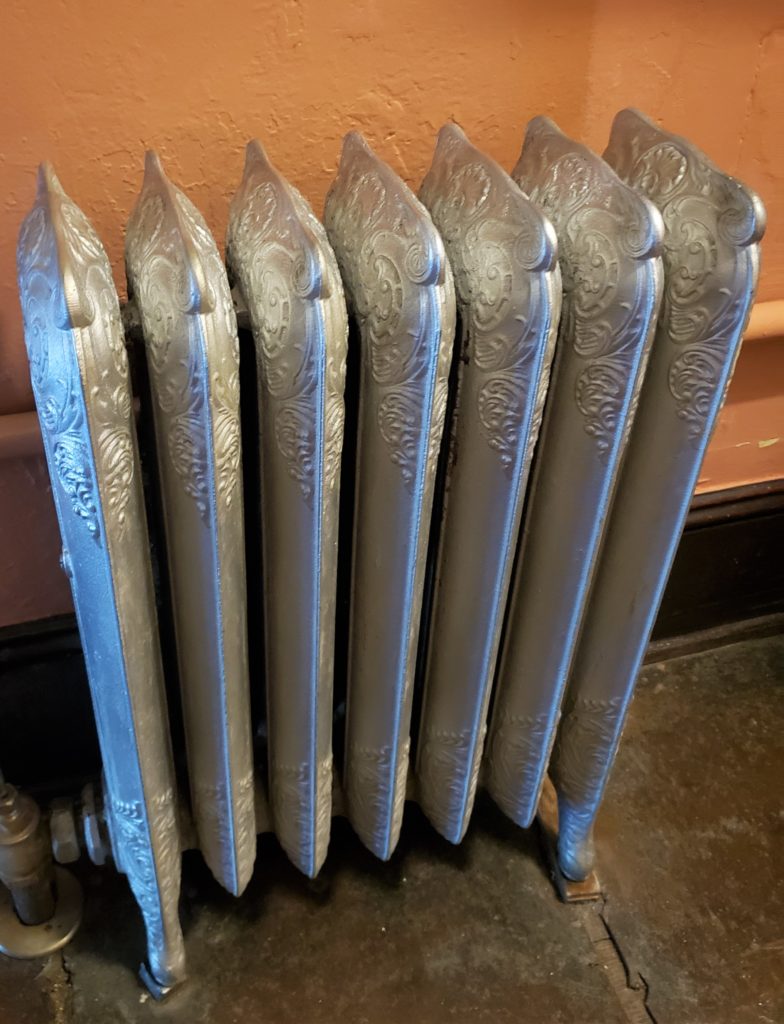
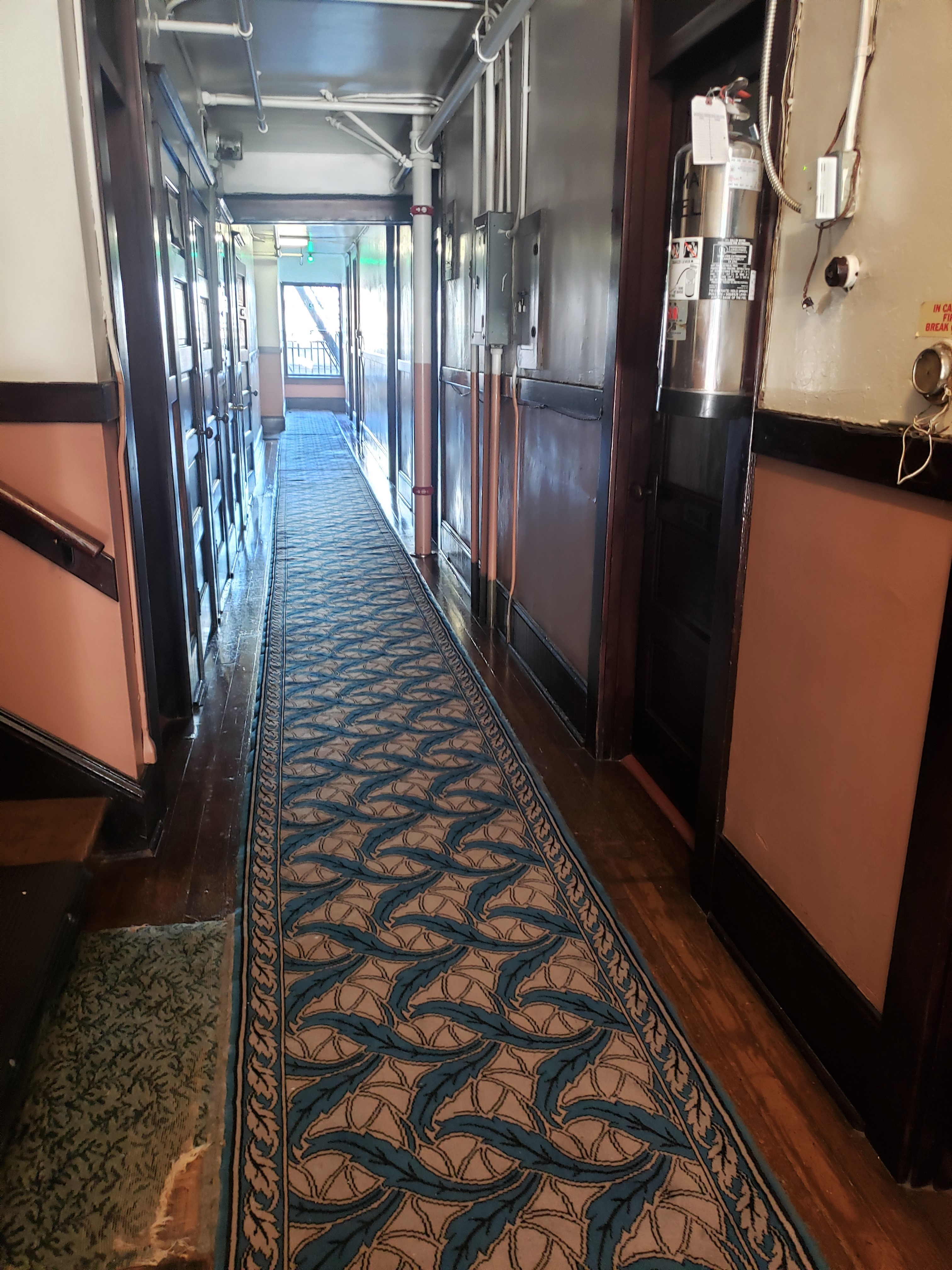
Each room contains a comfortable chair, a corner sink, a wardrobe, and an antique lamp. Jan talks quite a bit about the frugality and environmentally friendly design of the hotel. One of the wardrobes was made from an old refrigerator packing crate and has the stamp on the back to prove it!
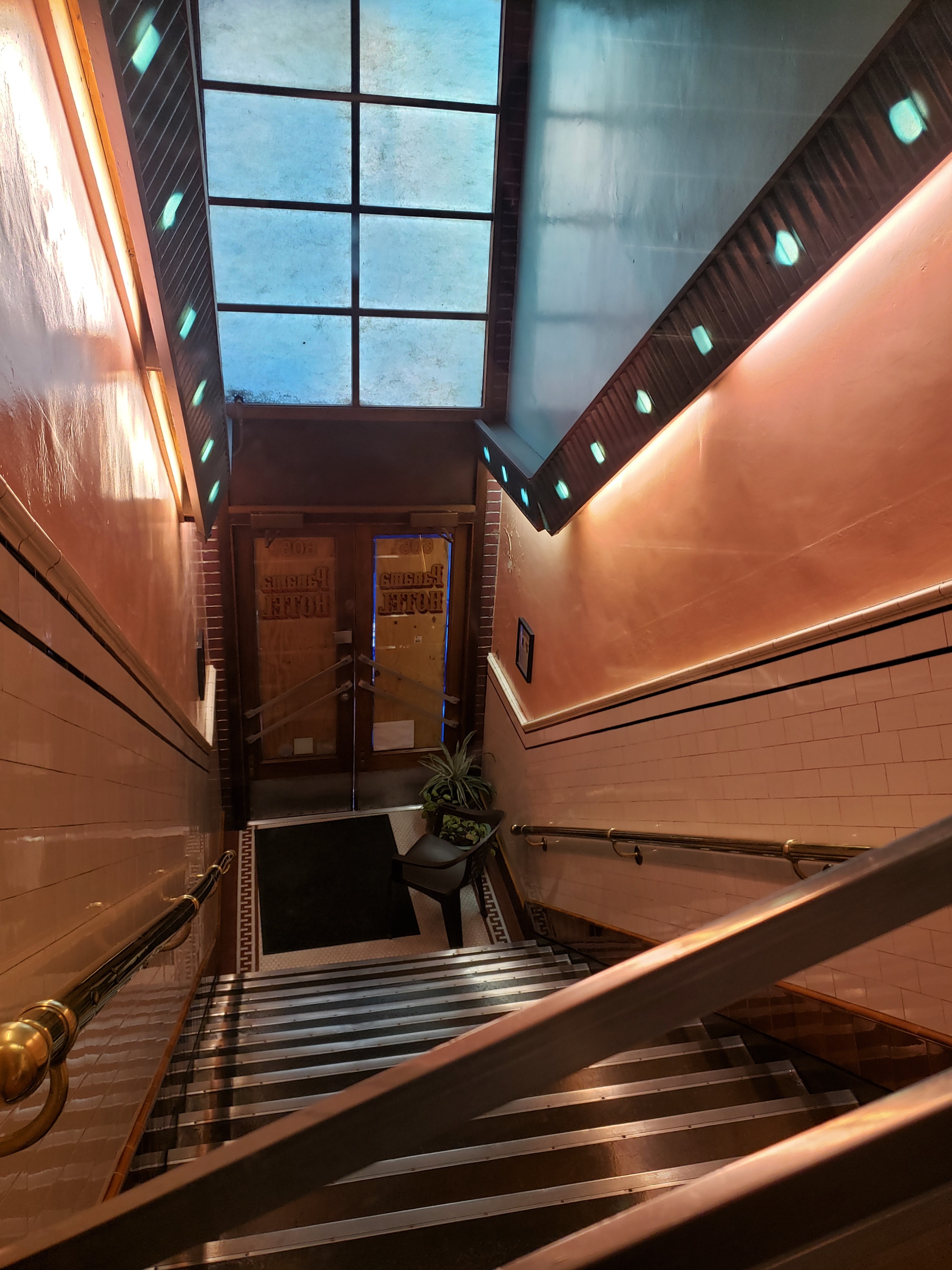
She pointed out the use of reflection and light in the hotel. “It was green before there Was green,” said Jan. Very little electricity is required because of the way the light comes in the windows. Even in the entryway, there are double sets of doors that help to regulate the temperature inside and the hallway carpet was bought used, 100 years ago!
Although she has been approached by a number of large, metropolitan museums, asking her to sell the historically significant items she houses; Jan has a bigger dream. “The contents of a museum are more relevant when they’re seen in context,” she says. She segues into the story of how she went to Greece to learn more about Greek history, only to find that many important artifacts were being housed in England. “Who wants to go to England to learn about Greece!?” Jan’s dream is to turn the Panama Hotel into a living museum, where visitors can see how people lived, in the place Where they lived. From the original cooler, to the ornate radiators, the used carpet purchased over 100 years ago, the luggage abandoned after the internment, and the public baths; entering the Panama Hotel is like taking a step into the past.
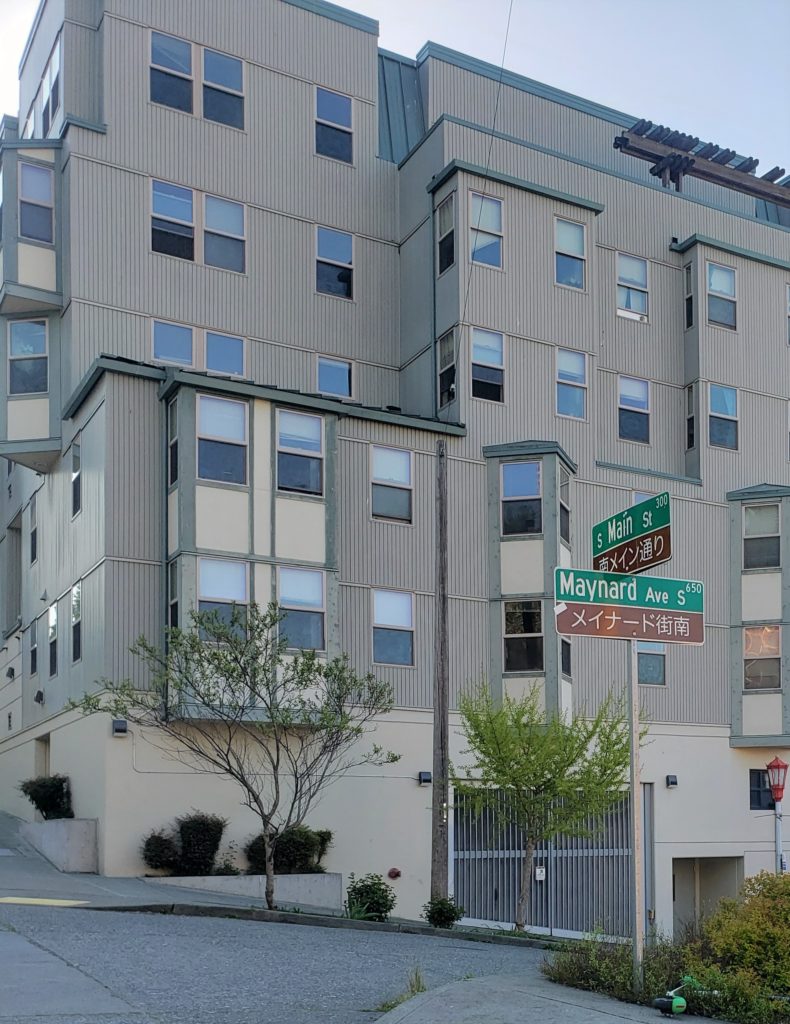
Check out “Hotel on the Corner of Bitter and Sweet,” a bestseller based on the story of the Panama Hotel, written by Jamie Ford.
![]()

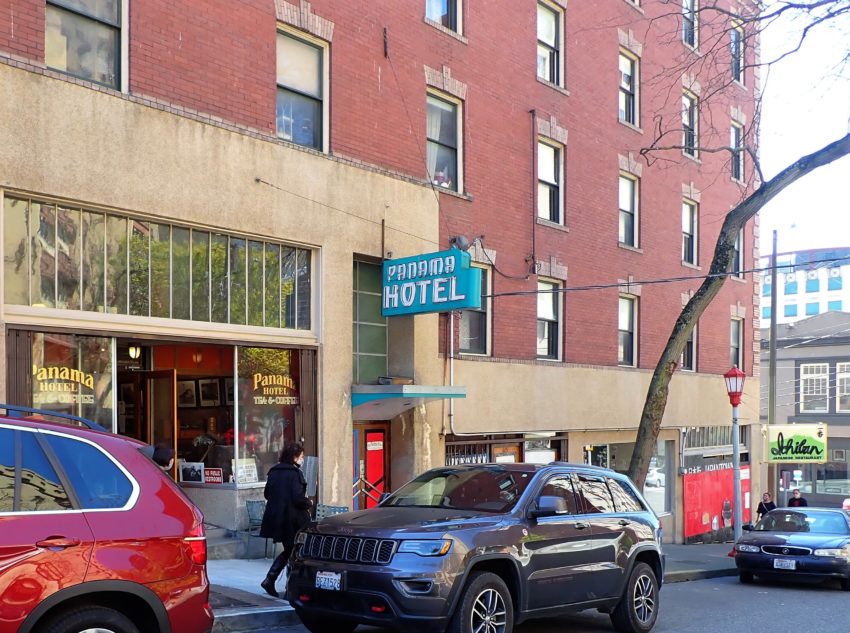
Jan! That lady is as much part of this neighborhood’s history as the neighborhood itself 😀
Wow ! Yes we need people like this in the community to share their knowledge to younger generation